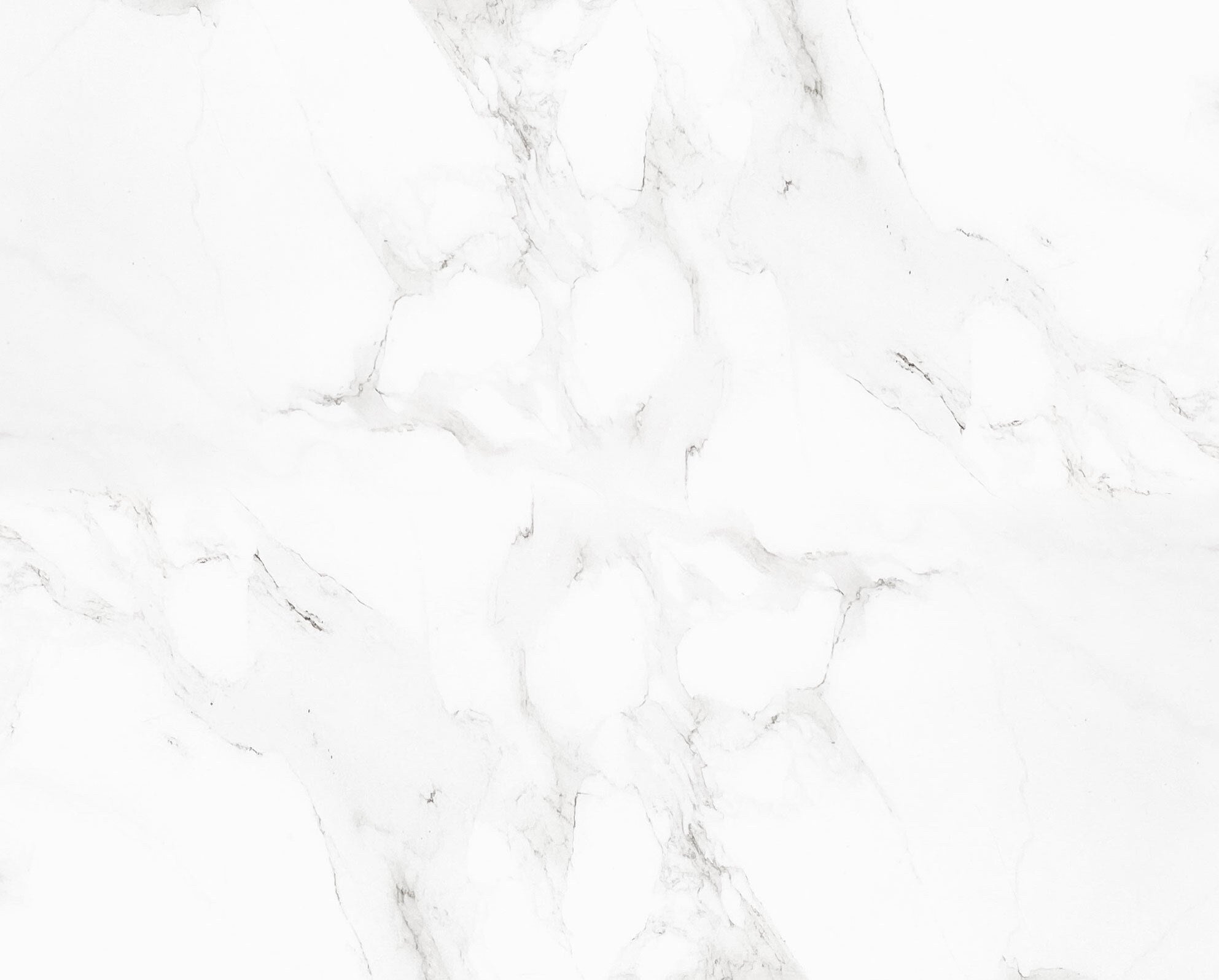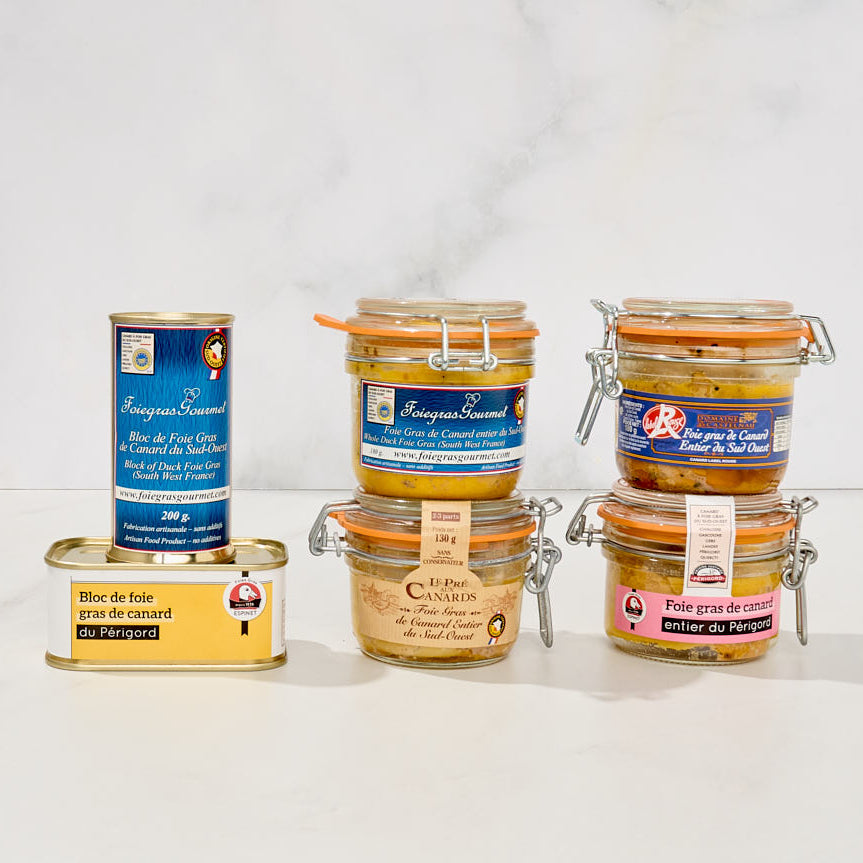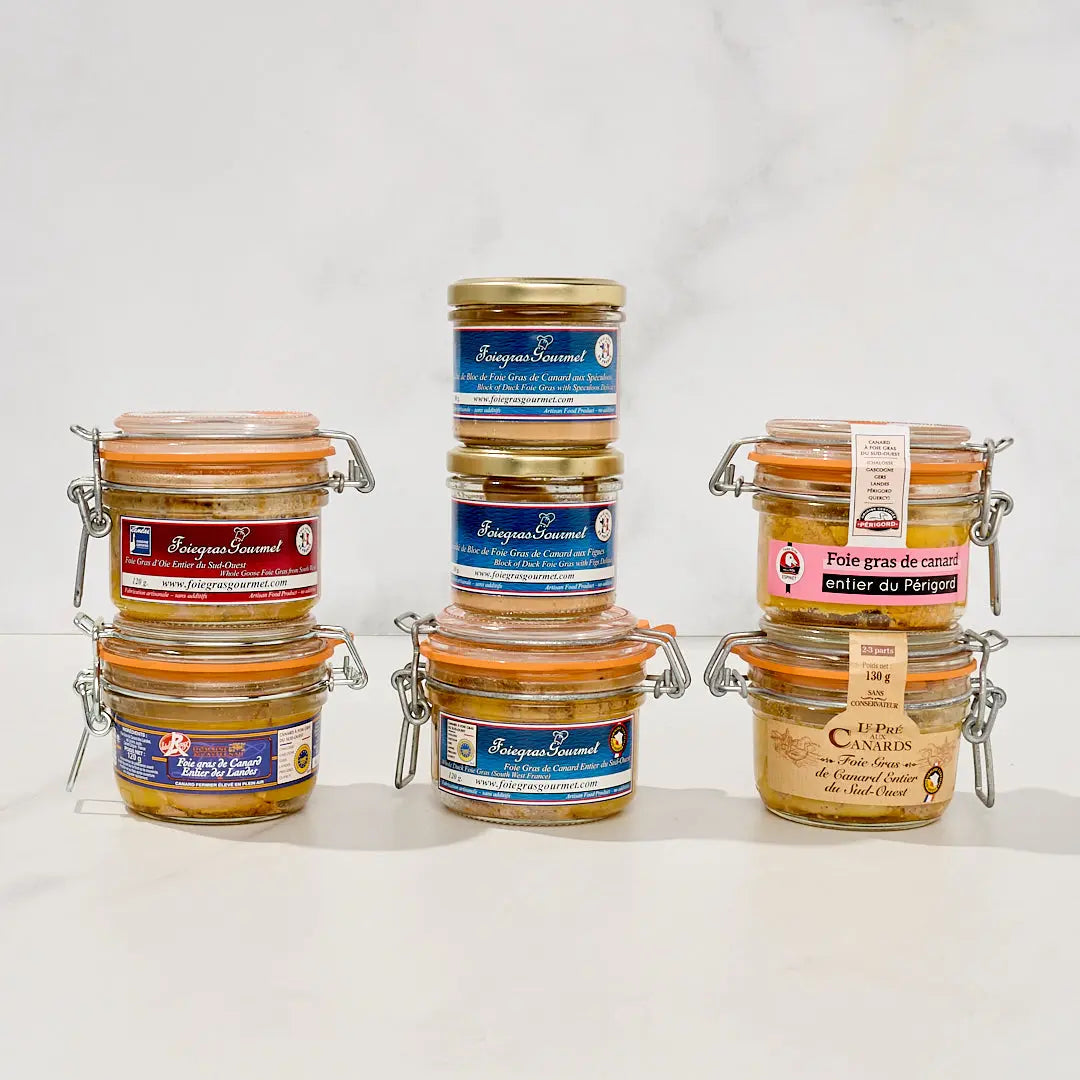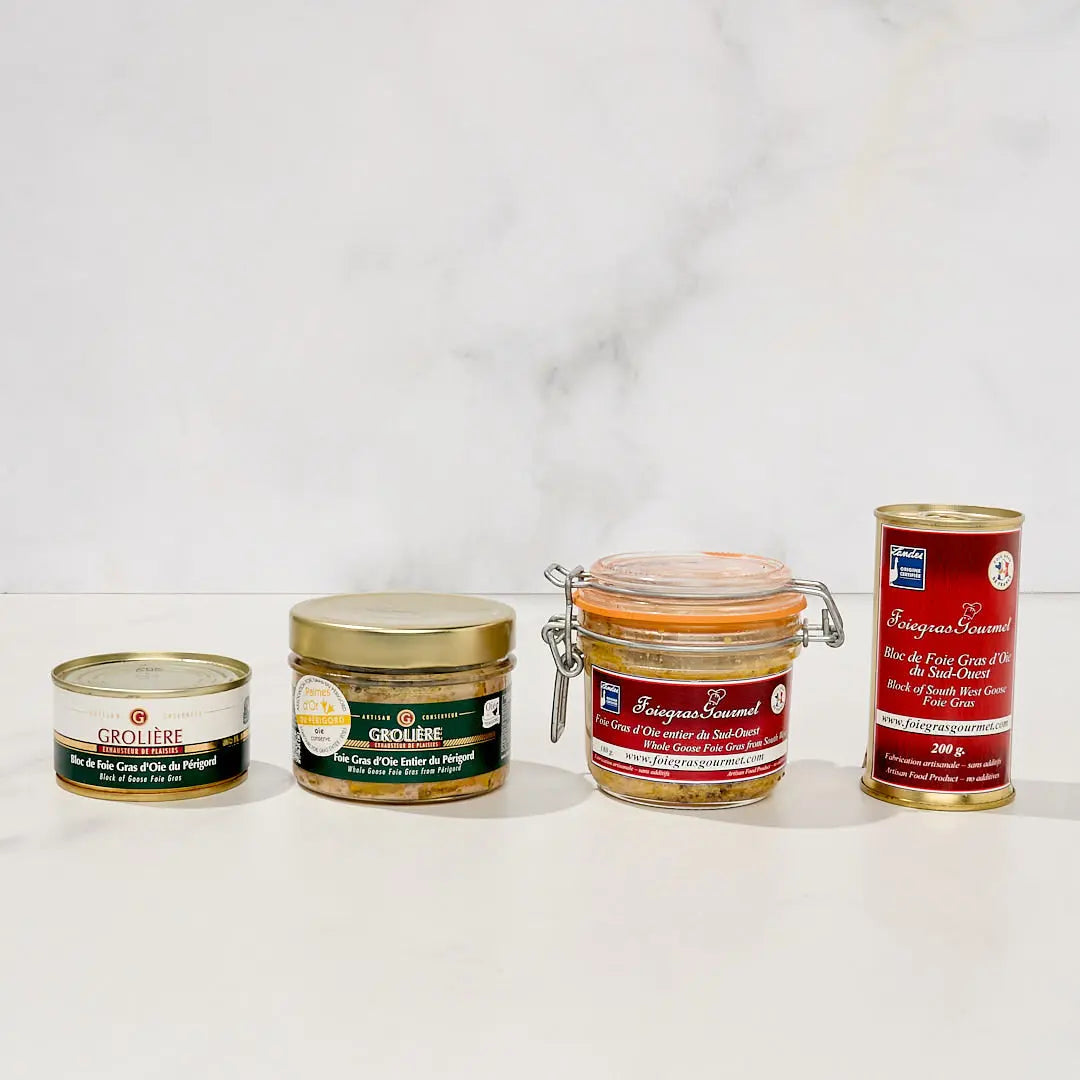Which is the best canned foie gras?
Clearly, we would like to tell you that the best canned foie gras are those we offer on our Foie Gras Gourmet site. Actually, it's true because we blind-tasted more than 50 brands of foie gras before deciding to offer just four.

From there, we developed our own brand of foie gras taking onboard all your feedback posted since the launch of Foie Gras Gourmet back in 2014.
However, those 50 different brands do not represent all the foie gras that exists in France, and we are sure that there are many local producers making excellent products that we have yet to taste.
During our frequent trips to the villages of southwest France, we taste new products each time, hoping to find an exceptional foie gras to compliment and update our range, and discovering imaginative chefs cooking original recipes. We occasionally find and excellent, traditional foie gras, although more often it is foie gras with a more standard taste, or products which are not very appetizing.
Some foie gras is made by local producers (some artisans make better quality foie gras than others), but we also find foie gras mass produced by industrial companies, packaged with labels implying that it is a traditional product that can mislead consumers.
Here are 5 tips for choosing the best canned foie gras
Be sure that you buy foie gras
Foie gras is a delicious dish, simply served on bread. It is, though, an expensive product. Watch out for products that look like foie gras but that just contain foie gras in varying quantities per oz of product. Avoid mousse, rillettes, pâtés mixed with wine or other flavors and buy only natural whole foie gras in jars or blocks of foie gras in tins.

Consider where you purchase
Foie gras from local producers can be found in south-western markets and in delicatessens but not in hypermarkets as local foie gras producers cannot afford to commit to the purchasing conditions of the large distribution groups (very low prices, very long payment terms etc), nor can they supply in the quantities required.
Of course, it is not always possible to go to a "marché au gras" and while buying your foie gras in the hypermarket closest to your home often seems the only possible solution, there is always Foie Gras Gourmet where you are certain to find only quality products.
Product origin
Before you even read the label, look at where the foie gras was made to ensure it is not of Eastern European origin. You may read BG (as in Bulgaria), for example. The first 2 numbers correspond to the department in France of manufacture – always select a department in the Southwest of France (40, 24, 81, 64, 65)
Read the label carefully!
Unless you are familiar with a particular brand of foie gras, it can be difficult to find your way around. The brand name chosen is frequently the work of the marketing manager who will often invent an aristocratic sounding name (like Comte du.., Marquise of..., Baron of...) which implies a quality product.

Ironically, foie gras has never been produced by aristocrats but rather by peasants who needed to preserve products to ensure a supply of meat during the long winter months. On the other hand, it is, of course, true that aristocrats or wealthy bourgeois soon appreciated the flavor of foie gras and became loyal consumers, the only people who could afford to pay a high price for this exceptional delicacy.
Above all, check the composition
Avoid all products containing additives such as E250 or others. Canned foie gras is a simple product, which should contain only 99% duck or goose liver and seasoning like salt and pepper.
Always choose a simple foie gras, even if it means adding seasonings yourself (grains of salt or peppercorns) or combining with an onion or fig chutney if you like the combination of sweet and savory flavors.
The IGP and Label Rouge labels
It is possible to raise ducks and geese across the whole of France. Moreover, there are small producers making quality foie gras all over the world. Nevertheless, because of their ancient know-how that the foie gras producers in the South-West guarantee the quality of their products by the implementation of a PGI (Protected Geographical Indication) and a Label Rouge.
From the Landes to the Périgord, through Gascony and Chalosse, the South-West is a land of sharing, where gastronomy is epitomized by the humble duck, which can be tasted throughout the region as duck breast, confit, aiguillettes... and of course in foie gras!
All the stages of production of a foie gras from the South-West follow rigorous standards and conform to high specifications. The ducks are raised in the open air for a minimum of 81 days and fattened exclusively with Southwestern corn. The foie gras is prepared in the accordance with tradition.
Label Rouge foie gras is even more demanding, with even stricter conditions including a minimum of 102 days of rearing.
Food is essential to life, so eat well. An excellent foie gras with a few truffles as an accompaniment requires very little preparation time and is delicious!
The food safety stamp provides you with all the information you need to compare the various products on display. It includes the country, department, commune of manufacture, identifies the producer and the assurance that the product complies fully with EU standards.






Leave a comment